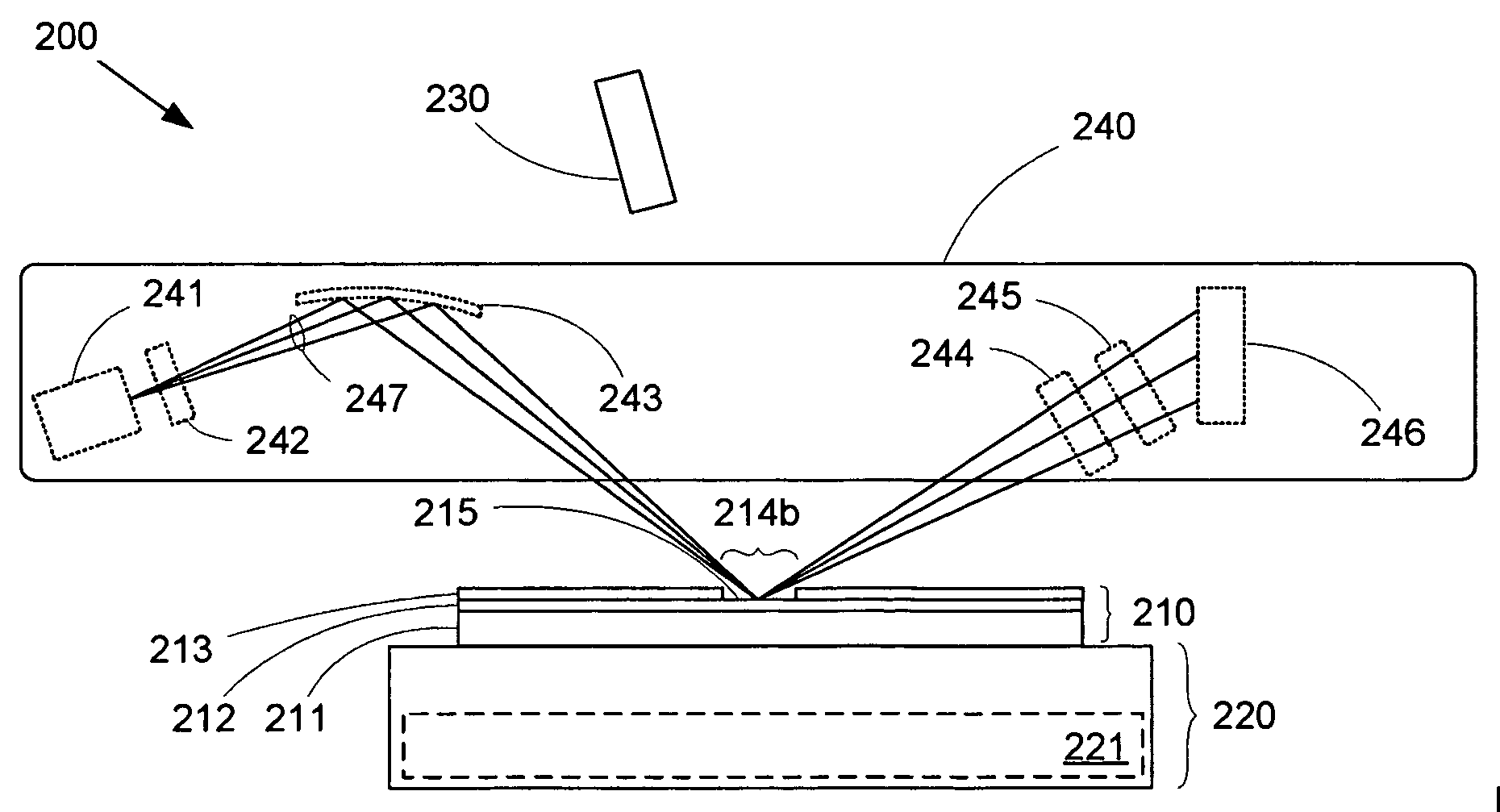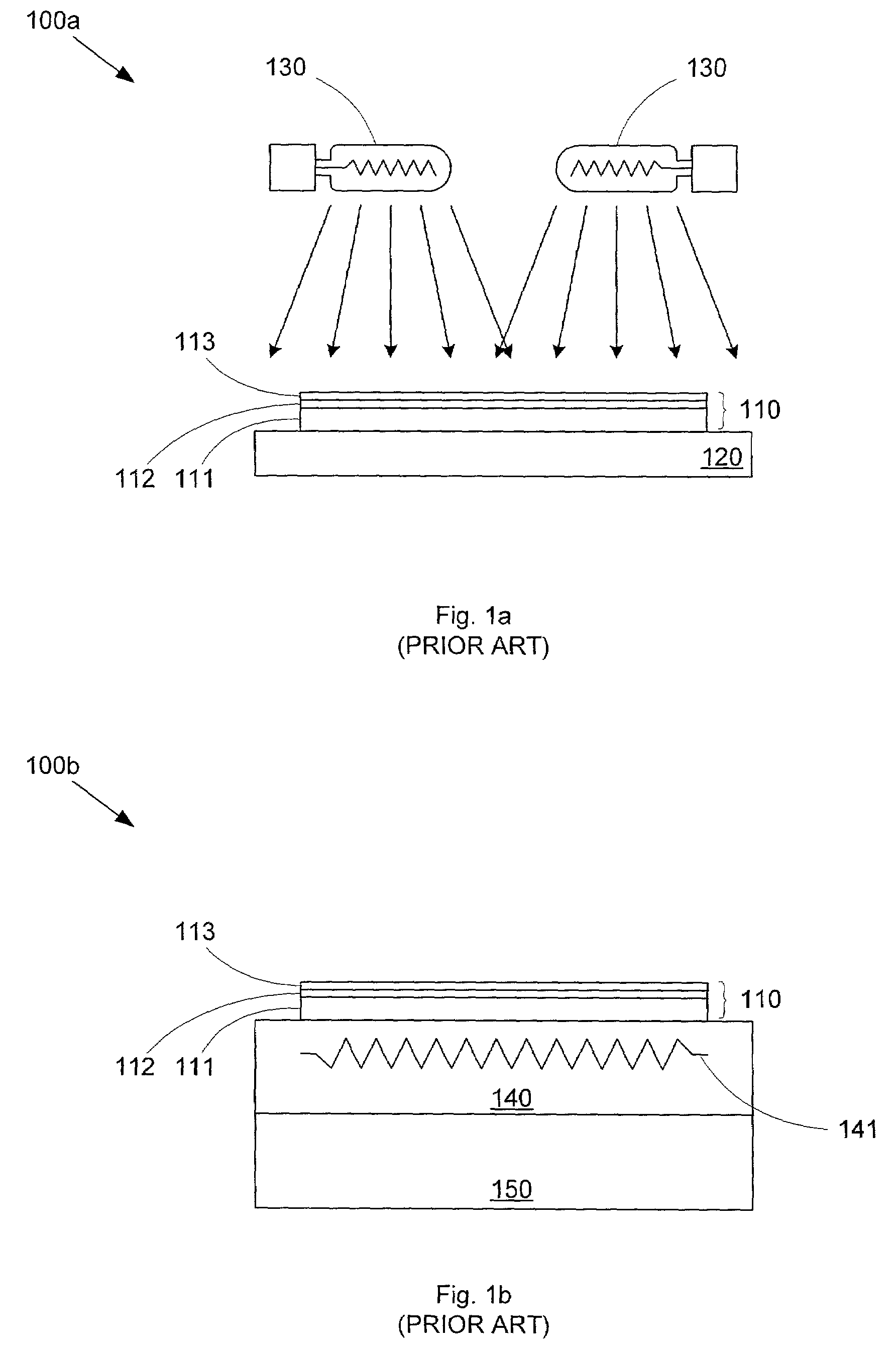Laser-based cleaning device for film analysis tool
a technology of film analysis and cleaning device, which is applied in the direction of material analysis using wave/particle radiation, optical radiation measurement, semiconductor/solid-state device testing/measurement, etc., can solve the problem of small damage risk to test sample, and achieve accurate and repeatable analysis of thin film, reduce the total footprint, and eliminate any delays
- Summary
- Abstract
- Description
- Claims
- Application Information
AI Technical Summary
Benefits of technology
Problems solved by technology
Method used
Image
Examples
Embodiment Construction
[0020]FIG. 2a shows a thin film analysis system 200 in accordance with an embodiment of the present invention. Analysis system 200 comprises a stage 220, an energy beam source 230, and an analysis module 240. Stage 220 holds a test sample 210 that comprises a thin film layer 212 formed on a substrate 211. Substrate 211 can comprise any structure on which thin film layer 212 can be formed, including a single-layer structure (such as a silicon wafer) or a multi-layer structure (such as an additional thin film layer or layers formed on a silicon wafer). Test sample 210 also includes a contaminant layer 213 formed on the surface of thin film layer 212. Contaminant layer 213 can comprise any unwanted material on the surface of thin film layer 212.
[0021]An analysis operation performed using analysis system 200 actually comprises two steps—a cleaning operation and a measurement operation. During the cleaning operation, a small portion of contaminant layer 213 is removed. The exposed portio...
PUM
| Property | Measurement | Unit |
|---|---|---|
| width | aaaaa | aaaaa |
| wavelength | aaaaa | aaaaa |
| wavelength | aaaaa | aaaaa |
Abstract
Description
Claims
Application Information
 Login to View More
Login to View More - R&D
- Intellectual Property
- Life Sciences
- Materials
- Tech Scout
- Unparalleled Data Quality
- Higher Quality Content
- 60% Fewer Hallucinations
Browse by: Latest US Patents, China's latest patents, Technical Efficacy Thesaurus, Application Domain, Technology Topic, Popular Technical Reports.
© 2025 PatSnap. All rights reserved.Legal|Privacy policy|Modern Slavery Act Transparency Statement|Sitemap|About US| Contact US: help@patsnap.com



